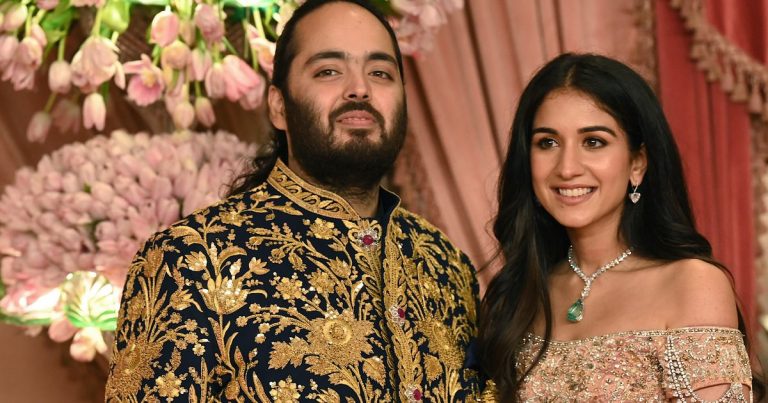Between July 12 and 14, Anant Ambani married Radhika Merchant.
If he weren’t the son of Asia’s richest man, Mukesh Ambani, and she weren’t the daughter of pharmaceutical tycoon Viren Merchant, their wedding would have been as harmonious as any happy Indian wedding: a five-month-long Mumbai ceremony (the engagement ceremony, at which Rihanna performed, took place in March) was a gaudy, stomach-churning display of opulence that cost a reported $600 million.
While the Ambanis were going through these ceremonies, the world was awash in images of some of the world’s richest people in attendance — A-listers from Bollywood and Hollywood, presidents and prime ministers, CEOs and business tycoons — and, if the red carpet at the wedding was any indication, it was as much a fashion show as it was a wedding celebration.
Renowned fashion designer Manish Malhotra acted as creative director for the wedding, with Merchant and Ambani wearing unique Abu Jani Sandeep Khosla dresses for the Hindu ceremony day. The wedding was attended by dozens of luxury fashion brands including Falguni Shane Peacock, Sabyasachi, Anamika Khanna and Tarun Tahiliani.
The wedding’s widespread coverage, both in India and abroad, has propelled South Asian designers to global fame, designing some of their most elaborate haute couture creations to date, meticulously blending craftsmanship and tradition (though the jury is still out on whether this is their best work).
For the haldi ceremony, Merchant wore a dupatta made of 1,000 fresh jasmine flowers by Anamika Khanna, while Falguni Shane Peacock created an ivory lehenga studded with hundreds of diamonds and pearls for Anant’s sister Isha Ambani.
Press and social media went wild over the outfits worn by both South Asian and non-South Asian guests at the Ambani wedding, and rightly so, because the outfits will influence wedding fashion trends for years to come.
But what we’re eager to see is also a boiled-down portrait of South Asian fashion rooted in hyper-capitalism: fashion is culture, culture is fashion. And this extravagance isn’t quite how we want the world to feel about South Asia, especially as wealth inequality in the region soars.
Young South Asians, both in India and abroad, have been particularly vocal about the discomfort they feel.
This divide was made clear over the wedding weekend, as two sets of images flooded us from Mumbai: one of the red carpet at the Ambanis’ wedding, where guests were decked out in jewels and fine fabrics, and the other of the monsoon-soaked clothing of Mumbai’s working-class residents who live across the Mithi river, where excessive flooding has destroyed infrastructure.
“So the only time the Mumbai monsoon could serve as a glamorous backdrop for a wedding is when it comes to Mukesh Ambani,” writer Paulomi Das aptly points out.
Some have argued that the pomp of the Ambanis’ wedding overturned preconceived notions of South Asia as an impoverished, corrupt, Third World region. This may be true: After all, the wedding was a testament to the region’s growing wealth and the rise of a class of gilded billionaires, including the Ambanis.
Open Image Modal Kim and Khloe Kardashian arrived at Ambani’s wedding in Mumbai on July 12, 2024.
Perpetuating a single narrative at either extreme erodes the richness of our culture, and the richest parts of South Asian fashion and culture come from the nuances and in-between, from the saris worn by women working the rice fields to the gold jewellery passed down from generation to generation.
Young South Asians, both in India and abroad, have been particularly vocal about the discomfort they feel: One TikTok user used a pre-wedding event in March (where Rihanna performed for $9 million and then mispronounced Merchant’s name during the show) to criticize how the Ambanis have exploited and perpetuated wealth inequality.
“I’m divided on Ambani’s wedding but I don’t want to be seen as a hater online,” said another TikTok user. One user commented, “I don’t mind being a hater in this case. In a country where over 290 million people are below the poverty line, spending millions on a Bollywood-produced lavish wedding 🤯.”
But perhaps our willingness to watch this spectacle in disgust reveals the worst about ourselves: our inability to tolerate capitalism while the rich buy and elevate global attention. And if the red carpet, the Keeping Up With the Kardashians camera crew (Kim and Khloe Kardashian were filming), and Justin Bieber’s private concert were any indication, this wasn’t a wedding. It was a performance.


